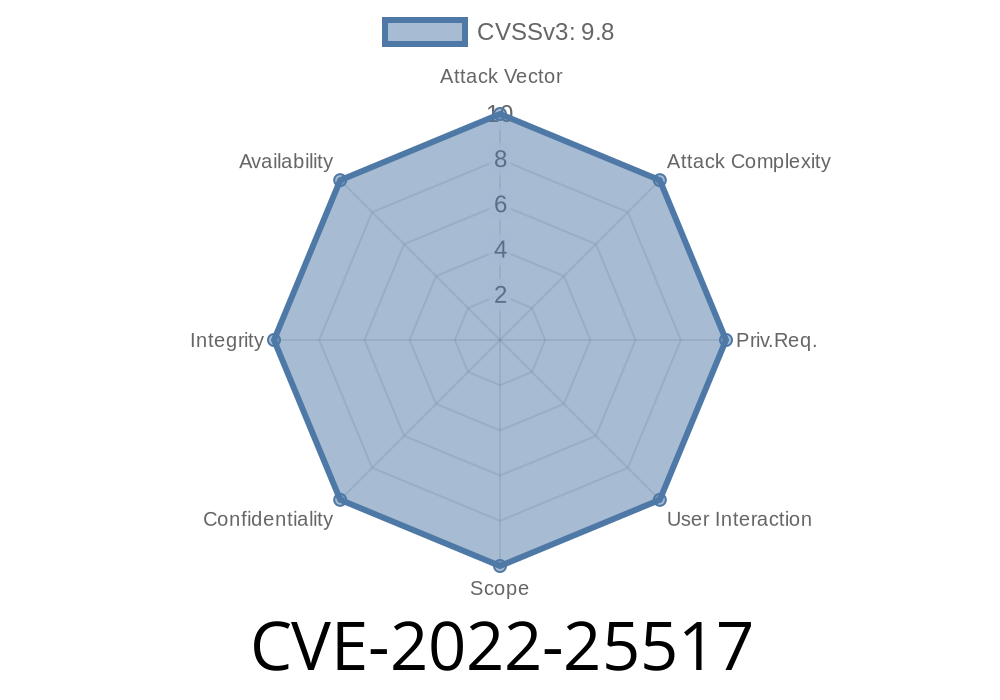Recently, MyBatis Plus, an open-source project for rapidly developing MyBatis-based applications, was found to have a high-risk SQL injection vulnerability. This vulnerability, with the CVE identifier CVE-2022-25517, can be exploited via the Column parameter in the /core/conditions/AbstractWrapper.java file. In this post, we'll take an in-depth look at this security issue and provide the necessary resources to help you understand the exploit, protect your applications, and prevent such vulnerabilities in the future.
Vulnerability Details
MyBatis Plus v3.4.3 (and potentially earlier versions) contains a SQL injection vulnerability that arises due to improper user input validation for the "Column" parameter. Attackers can exploit this vulnerability to execute arbitrary SQL queries, gain unauthorized access to data, and potentially execute commands on the underlying server with the permissions of the targeted application.
The vulnerable code snippet is located in the /core/conditions/AbstractWrapper.java file, as shown below:
public class AbstractWrapper<T, R, Children extends AbstractWrapper<T, R, Children>> {
// ...
public Children eq(R column, Object val) {
return this.addCondition(column, "=", val);
}
// ...
}
This code defines a method 'eq' that takes in two arguments: a 'column' parameter (R) and a 'val' parameter (Object). The method is responsible for generating SQL where clauses and concatenates the user-supplied 'column' parameter directly into the query string without proper sanitization or validation. As a result, an attacker can inject malicious SQL code into the 'column' parameter.
Exploit Details
To exploit this vulnerability, an attacker must craft an HTTP request that includes a specifically crafted 'column' parameter designed to manipulate the SQL query being executed. The attacker can craft a query that alters the intended functionality, extracts unauthorized information, or even executes server-side commands.
Here's an example of an exploit payload
column=1=1; DROP TABLE users--
This payload would inject the SQL code 1=1; DROP TABLE users-- into the 'column' parameter. When executed, the server would delete the 'users' table from the database.
Original Reference
The original researchers that discovered and reported the vulnerability can be found at the following links:
1. CVE-2022-25517 MyBatis Plus SQL Injection Vulnerability
2. GitHub Issue Report
Recommendations
To mitigate the risk of this vulnerability, it is strongly recommended to follow best security practices, including:
1. Update to the latest version of MyBatis Plus, where the issue has been patched. The vulnerability has been fixed in MyBatis Plus v3.4.4.
2. Validate and sanitize user input before using it in any SQL queries. This can involve using parameterized queries, stored procedures, or SQL escape functions to avoid SQL injection attacks.
3. Employ a strong security framework and closely follow the OWASP Top Ten Project for securing your application against critical threats.
4. Perform regular code reviews and security audits to uncover and remediate vulnerabilities proactively.
In Conclusion
The discovery of the SQL injection vulnerability (CVE-2022-25517) in MyBatis Plus v3.4.3 is a significant reminder of the importance of secure software development practices and the need to be proactive in managing security vulnerabilities. Developers and system administrators should promptly update their MyBatis Plus installations, implement robust input validation and sanitization techniques, and stay informed about emerging security threats. By doing so, you can substantially reduce the likelihood of falling victim to devastating cyberattacks and keep your data and systems secure.
Timeline
Published on: 03/22/2022 19:15:00 UTC
Last modified on: 03/28/2022 20:23:00 UTC
